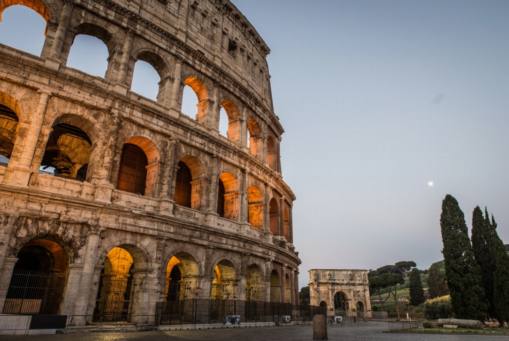Step back in time to ancient Rome and immerse yourself in the luxurious world of the Baths of Caracalla. These grand public baths were not only a place for relaxation and socializing but also served as a hub for health and hygiene practices in Roman society. As you explore the opulent decor and learn about the daily life of Romans, you'll gain a deeper understanding of the importance of these public spaces in shaping the culture and lifestyle of the time. Join us on a journey to uncover the fascinating insights into Roman daily life at the Baths of Caracalla.

Socializing and Relaxation in Ancient Rome: A Day at the Baths of Caracalla
Wealthy and common citizens alike would gather at the baths to socialize, catch up with friends, and unwind from the stresses of daily life. The sprawling complex offered a variety of amenities, including hot and cold pools, steam rooms, exercise areas, and even a library for those looking to relax with a good book.
Visitors to the Baths of Caracalla would spend hours soaking in the pools, gossiping with friends, and indulging in luxurious treatments such as massages and oil rubs. The atmosphere was lively and vibrant, with the constant chatter of voices filling the air as people swapped stories and shared news. It was a place where social hierarchies were temporarily set aside, and all were welcome to partake in the communal experience of bathing and relaxation.
For many Romans, a day at the baths was not just about cleansing the body, but also about rejuvenating the spirit. The warm waters and serene environment provided a welcome escape from the hustle and bustle of city life, allowing people to unwind and recharge before returning to their daily responsibilities. In a society where leisure time was a precious commodity, the Baths of Caracalla offered a much-needed respite from the demands of work and family.
Overall, the Baths of Caracalla were more than just a place to bathe – they were a social center where people could come together to relax, socialize, and enjoy the simple pleasures of life. The communal experience of the baths played a vital role in shaping the social fabric of ancient Rome, providing a space where people from all walks of life could come together to unwind and connect with one another.
Luxury and Opulence: Exploring the Decor of the Baths of Caracalla
The Baths of Caracalla, one of the largest and most extravagant public baths in ancient Rome, were a testament to the luxury and opulence of Roman society. The decor of the baths was truly magnificent, showcasing the wealth and grandeur of the Roman Empire.
As visitors entered the baths, they were greeted by towering columns, intricate mosaics, and lavish marble statues. The walls and ceilings were adorned with colorful frescoes depicting scenes of mythology and everyday life, creating a visually stunning environment for relaxation and socializing.
The central bathing area of the baths was decorated with exquisite marble floors and intricately carved statues, further emphasizing the opulence of the space. Fountains and gardens filled the complex, providing a peaceful retreat for visitors to enjoy amidst the hustle and bustle of the baths.
In the caldarium (hot baths), visitors could marvel at the intricate tile work and elaborate mosaics that adorned the walls and floors. The frigidarium (cold baths) offered a refreshing escape from the heat, with marble pools and intricate water features adding to the luxurious atmosphere.
Overall, the decor of the Baths of Caracalla was a reflection of the wealth and grandeur of Roman society. Visitors to the baths would have been awe-struck by the opulence and beauty of the surroundings, making their experience not only one of relaxation and rejuvenation, but also a glimpse into the extravagant lifestyle of ancient Rome.
Health and Hygiene Practices in Roman Society: The Role of Public Baths
The Romans believed in the importance of cleanliness for both physical and mental well-being, and the public baths provided a place for individuals to cleanse themselves and socialize with others.
The baths were not only a place to bathe, but also to exercise, relax, and even conduct business. Romans would visit the baths daily, as part of their routine to maintain personal hygiene. The facilities were equipped with a variety of amenities, including hot and cold pools, steam rooms, and massage services.
In addition to physical cleanliness, the public baths also served as a space for social interaction. People from all walks of life would come together at the baths, engaging in conversations and forming connections with one another. It was a place where individuals could relax and unwind, away from the hustle and bustle of daily life.
Furthermore, the baths played a role in promoting good health practices among the Roman population. The Romans understood the importance of regular exercise and maintaining a healthy diet, and the baths provided a venue for individuals to engage in physical activities such as swimming and wrestling.
Overall, the public baths were not only a place for physical cleansing, but also for socializing, relaxation, and promoting good health practices. They were an integral part of Roman society, reflecting the importance placed on hygiene and well-being in ancient times.
